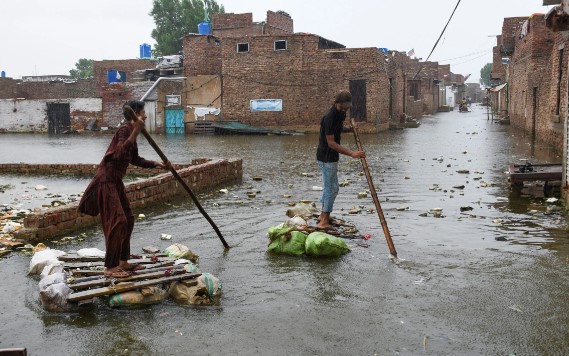
Pakistan is a wonderful, but vulnerable country. Internal politics, religious extremism, and ecological risk plague its life and its international profile. My focus here is on the crippling effects of the recent floods that brought havoc, heartache, and the loss of life to many inside and, I should stress, outside the country. For, Pakistan is by tradition, culture and design, an international family, close ties of affinity binding communities across the globe to its life and flourishing, its tragedies and triumphs. Here, truly, ‘When one suffers, all suffer.’
To set the recent floods in context. Because of its location and topography, Pakistan is in the top ten of countries most susceptible to environmental change. Like many other places, during the last thirty years Pakistan has seen significant alteration to its weather patterns. Increases in temperature and rainfall, in the violence of its annual cyclones and monsoons, and in its shoreline mists and erosion, have imprinted the present global ecological crisis on Pakistan’s landscape and consciousness. Global warming and rising sea levels associated with Arctic melt, have created tidal surges in coastal lagoons, ravaged fragile biodiversity and increased desertification. To say Pakistan is in the eye of the global (and geopolitical) ecological storm is an understatement. The marshes and swamps of Baluchistan and Sindh reflect the impact of ever more intense equatorial storms, rain, and seawater encroachment, while the dusty plains of Punjab and Sindh face unprecedented heat and riverine tides. The consequences at every level for Pakistan have been, and remain, devastating, with financial fluidity and human insecurity too often unacknowledged collateral damage.[1]
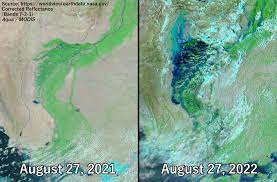
Beginning in June 2022, the vast swathes of flooding that afflicted Pakistan were the worst since 1961. [2] According to official figures, between June 14 and October 1,717 people died (including 639 children) and 12,867 were injured. Damage to infrastructure is estimated at $40bn, with 800+k houses destroyed and 2.1+m. damaged in the deluge. Relief efforts were hampered by the cyclone’s destruction of 13,115 km. of roads and 436 bridges. The ‘state of emergency’ declared by the government on August 25 produced a significant internal and external response. Central government designated $170m. for flood victims; civil servants and members of the armed forces donated a month’s salary; former Prime Minister Imran Khan (b. 1952; PM 2018-2022) raised $22.5m. in a 3-hour telethon; while PTCL, Pakistan’s largest telecoms company, donated $8m. to flood relief and the national telecommunication Authority (PTA) set up a 9999 SMS for donations. Substantial assistance was also received from the international community, with (among others) the World Bank adding $370m. to its existing $2bn project allocation, the UN providing $3m. from CERF (Central Emergency Relief Fund) and appealing for an additional $160m. from member states, the EU donating $2.35m, the UAE $50m., the UK more than $20m., and the US $30m. and specialist technical assista.nce. Additional financial and practical support (viz. food, tents and medical supplies) poured in from private, national and corporate sources. Pakistan’s plight was recalled in COP 27’s move towards ecological ‘loss and damage’ with delegates inspired to recognize, ‘We cannot fail them.’ In short, this was no minor incident, nor even a major disaster, the 2022 floods have torn Pakistan apart. Behind the headline story and statistics, the extent of the short-, medium-, and long-term damage, is inestimable.
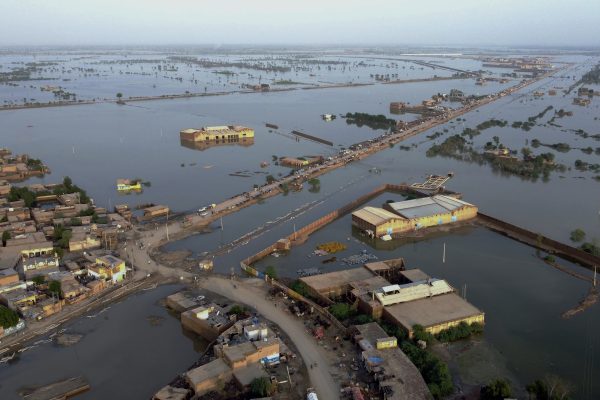
The extent and reality of the damage caused by the floods
The data we are dealing with here puts into sharp relief the strengths and weaknesses of domestic policy and international aid, both of which are, of course, impacted by the present global recession and acute state of geopolitical tension. But the facts speak for themselves. Let’s look at them.
i. The extent of the flood. Pakistan is 881,913 sq.km. with a population of ca. 243m. people. The 2022 floods affected Baluchistan, Sindh, Khyber Pakhtunkhwa, Gilgit-Baltistan, Azad Kashmir and southern parts of Punjab; that is, 10-12% of the country and ca. 33m. people. The floods left 2.1m. homeless. 94 communities were obliterated. But this bald data only tells half the story. Food and food production, sanitation, education, and basic healthcare were all affected. Layer upon layer of life was drowned by rainfall 6-7 times above average, with two regions experiencing 75% of the rain in a 5-day peak period. This came on the back of a prolonged heatwave, in which daytime temperatures regularly exceeded 45°C. Crops had already failed and food shortages become severe. To use a sickening expression, Pakistan experienced a ‘perfect storm’ of convergent crises. Pressure on local and national governments was acute.
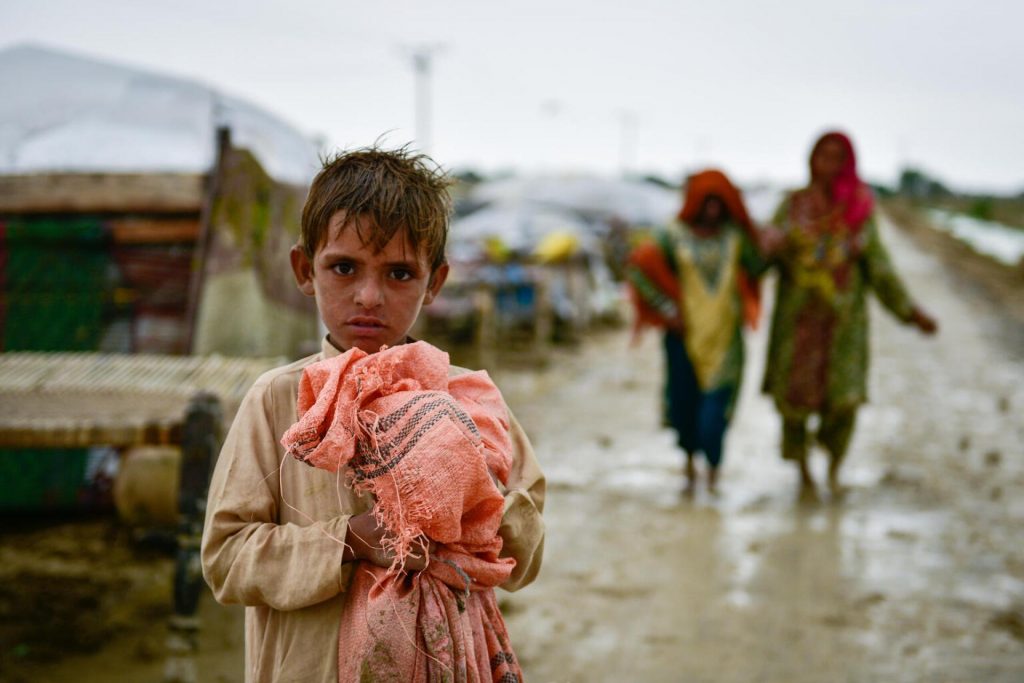
ii. Underlying problems and popular reactions. Annual monsoons are part of life in Pakistan. Local and national governments are expected to have effective contingency plans in place. At the start of the 2022 hurricane season, a National Disaster Management Plan (NDMA) and National Flood Protection Plan (NFPP), allied to a new Monsoon Contingency Planning Exercise, were implemented. These initiatives attracted broad support from national and local actors and the international community. Operational and administrative weaknesses at every level served to undermine their effectiveness when disaster struck. Metropolitan relief efforts, including the provision of food and water, were swiftly overwhelmed when the scale of the crisis became clear.[3] And all was set against the persisting impact of COVID-19, soaring prices, energy and fuel shortages, and a crippled and crippling economy. Poor lines of political and fiscal decision-making and accountability exacerbated the problem. The absence of a dynamic, functional, efficient overseer of relief is now widely recognized.[4] Increased distrust of, and loss of respect for, government agencies is now endemic.
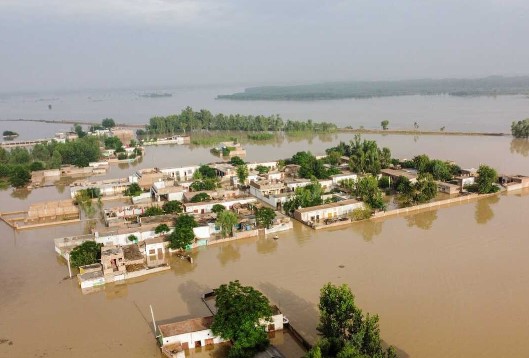
iv. Family life, employment and poverty. The interrelatedness of life in Pakistan (as, indeed, elsewhere) has meant the impact of the floods has touched every area of life and corner of the country. The hard-hit agricultural sector has seen the cotton and cloth industry – in which small scale manufacturers account for 50% of overall supply and equipment exports, and local fibre one quarter of the industry as a whole – deeply affected. Likewise, local meat production and processing has suffered a significant reduction in food supplies and animals for slaughter. The damage to highways and bridges, noted already, has of course also had a knock-on effect on the transportation of goods to market and distribution centres. Patterns of life and work have been profoundly impacted. Prices are projected to fall by 0.6% of GDP in 2022. According to preliminary estimates by the Post Disaster Needs Assessment agency (PDNA), public debt is expected to increase by 3.7-4.0% with between 8.4 and 9.1m. lives added to poverty statistics. Multidimensional deficit is expected to double by 5.9% with a further 1.9m. families experiencing non-financial difficulty.[6] Starvation in Sindh province is projected to increase by ca. 8.9 to 9.7%, in Baluchistan by 7.5 to 7.7%. In areas already experiencing poverty and destitution, life has become even harder. 19 of the 25 poorest regions were directly impacted by the floods, with destitution running at 31.2% compared to the national average of 21.9%. The chasm between basic need and sufficiency has widened nationwide with 18-26m. families newly destitute and prices rising sharply in flood affected areas.[7] Nor we should forget the long-term effects on concentration and aspiration caused by the widespread disruption to schools and places of higher learning. The greatest tragedies in the recent flood, in addition to the loss of so many lives, will be the loss of educational and professional dreams and aspiration.
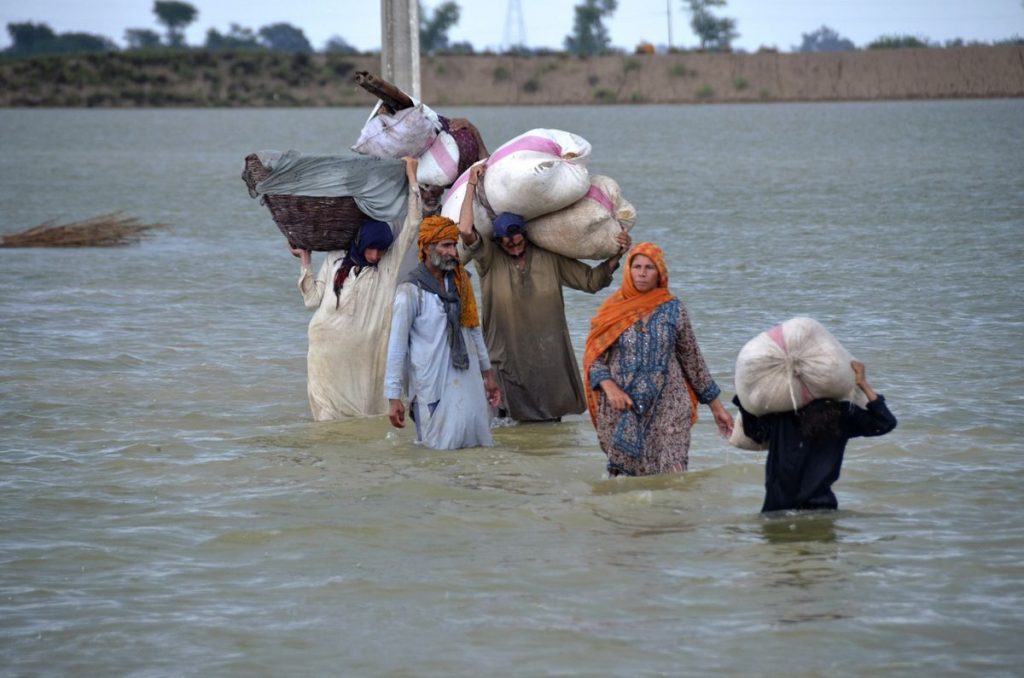
iii. Economic realities. The full economic impact of the 2022 floods will not become clear for many years. As indicated already, the Pakistan government presently estimates the damage at PKR 3.2 tr. (US$14.9 bn); that is, 4.8% of the country’s projected 2022 GDP. A quarter of this is expected to affect commerce and agriculture, one half power and utility companies. Recovery is expected to cost 1.6x the original financial projections for 2023. The knock-on effects on industry, incomes, and livelihoods cannot but be immense; albeit there are bound to be regional and sectoral differentials, as there have been in the flood areas. Few commentators doubt that some of the damage to families, communities, businesses, and farming is either irreparable or will require sustained attention and long-term investment.[5] Short-term economic support may mitigate (some of) the immediate socioeconomic impacts of the floods, but strong leadership, clear plans and substantial foreign subsidies will be needed if acute macroeconomic damage is not to be felt long term. Previous experience is not encouraging. The government already projects a 2.2% reduction in the GDP for 2022 as a direct consequence of the floods, with agriculture accounting for 0.9% of that (esp. through losses to cotton and cotton production, dates, sugarcane, wheat, and through the death of ca. 1m. farm animals).
The path to recovery
No one expects Pakistan to recover from the floods quickly. Rehabilitation and recovery will take time.[8] The ‘Power of Pakistan’ is central to domestic policy and planning, with the National Flood Response and Coordination Centre (NFRCC) charged to assess the damage and oversee reconstruction. Its work has been supplemented by help from the Armed Forces and government departments, with the NDMA receiving help to transport goods and rebuild infrastructure. Particular attention has been paid to the need for shelter, clean water, food and nutrition supplements.
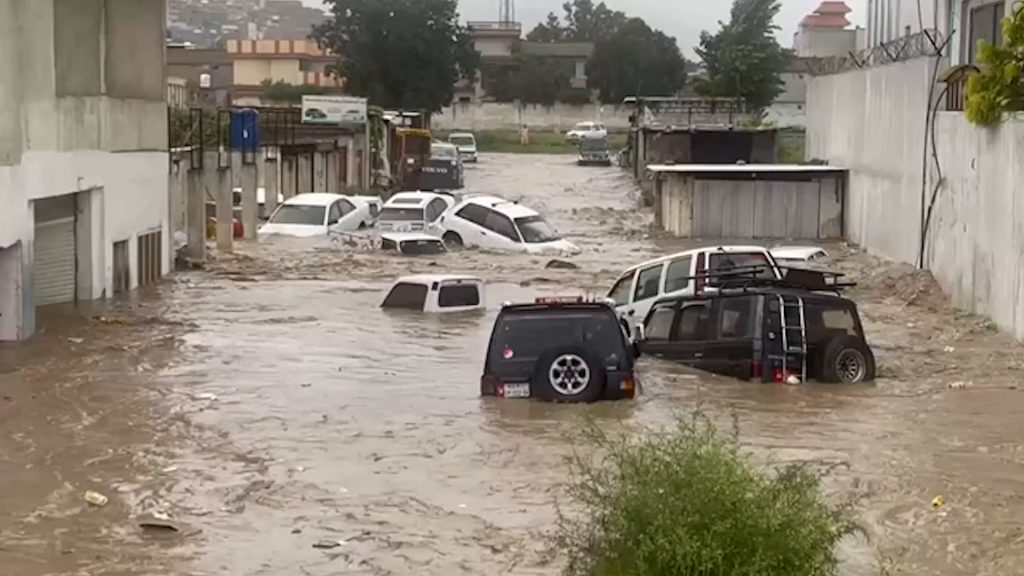
The cost of recovery is immense. On August 19, the government of Pakistan set up a PKR 37.2bn fund (ca. $170m.) to help 1.5m. people in acute need.[9] This was followed on August 30 by a joint Pakistan-UN Pakistan Flood Response Plan (FRP), which identified essential needs and proposed a plan to meet them. On October 4 this plan and its costing were revised, with $816m. now identified as needed to meet the immediate needs of 9.5m. people. As of October 21, 13.7% of this amount had been forthcoming. However, as we have seen, international aid has provided significant resources for reconstruction and relief. Among these, the Asian Development Bank (ADB), EU and UN have played a leading role in supporting Pakistan’s Post-Disaster Needs Assessment (PDNA) programme as it has sought to handle the complex interface between management, finance and reconstruction. The sums are vast: damage is estimated at PKR 3.2 tr. ($14.9bn), reconstruction PKR 3.3 tr. ($15.2 bn), and the total budget PKR 3.5 tr. ($16.3 bn). Broken down this is roughly PKR 1.2 tr. ($5.6 bn) for domestic and structural repair, PKR 800 bn ($3.7bn) for farming, agriculture, food and fisheries, and PKR 701 bn ($3.3bn) for transport and communication. At this point in time, it is clear to many there will need to be a paradigm shift in thought and action for urgently needed reconstruction to proceed in a speedy and orderly fashion. Cooperation and collaboration will be key, with a clear aim to engage local and national agencies, individuals and communities, managers and analysts, to scope and service needs and solutions. Shareholder buy-in will be essential for the full spectrum of problems and possibilities to be faced. Close monitoring and public liability are essential if an otherwise vulnerable country and reconstruction process are to be safeguarded for future generations.
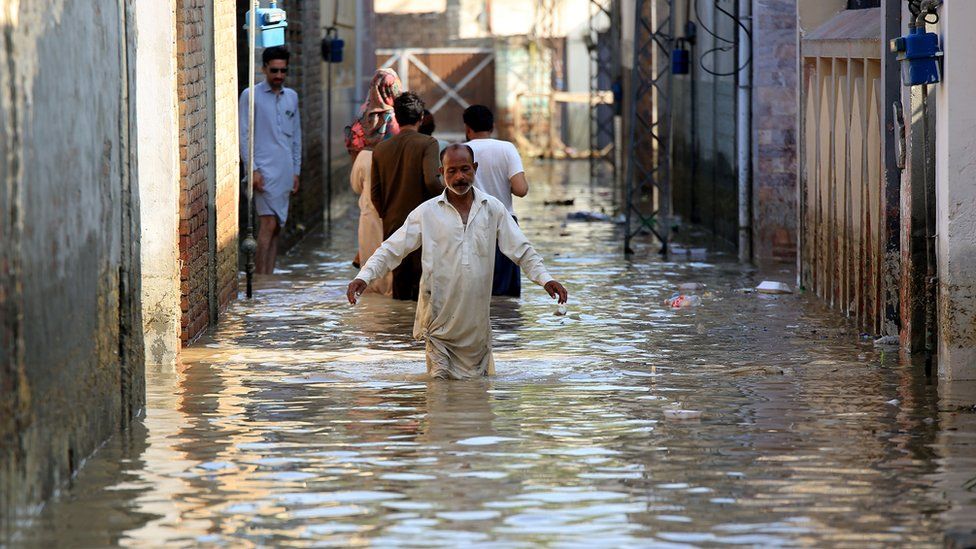
Some commentators have pressed for the crisis in Pakistan to be seen as an opportunity for a fresh approach to government and governance, with historic methods exposed by recent events as not fit for purpose. Vld, Carlsson and Dobias argue for a people-driven approach built on the principle of ‘Mature Pakistan’, viz. for change to be built on the three pillars of strengthening (existing structures), rehabilitating (in a people centred approach to decision making) and adapting (with flexibility baked into planning so projects can absorb, and be adjusted to meet, the unexpected).[10] Central government, it is argued, must be prepared to face structural change to incorporate these three key principles in its day-to-day work. In addition, it’s pointed out, for this restructured vision to be implemented, the government will need to be proactive to reduce unemployment and grow the job market, make funds and loans available for businesses to draw on, and create new administrative structures to oversee local recovery initiatives.[11]
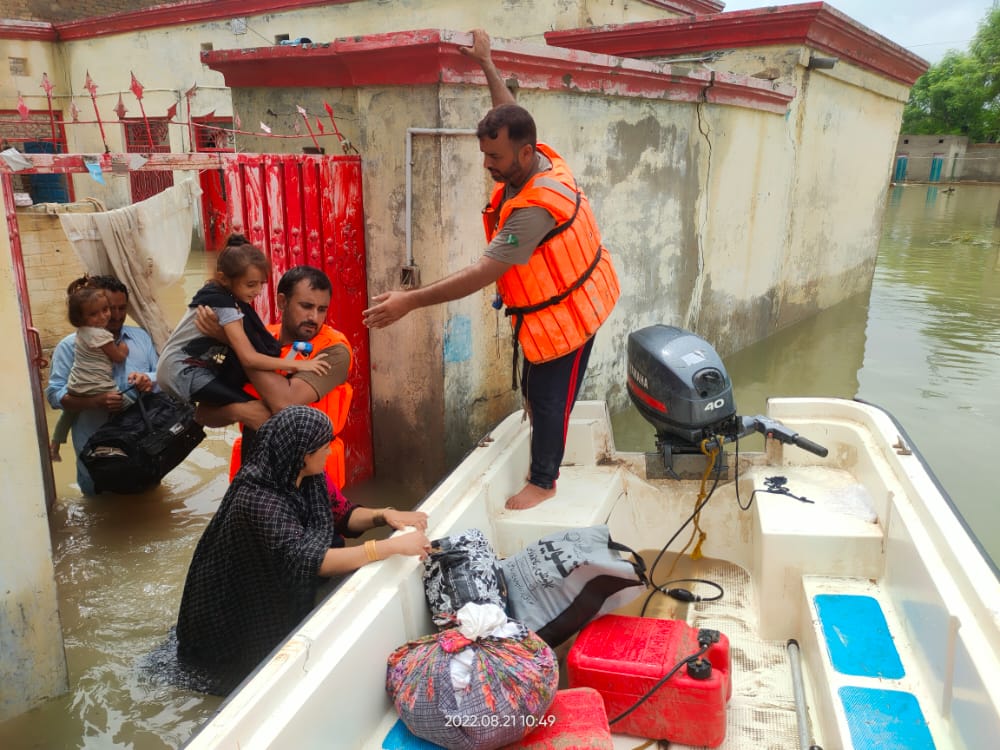
Policy recommendations
The 2022 floods came at a time Pakistan was already struggling economically. Recession had set in. The way ahead looks bleak. A declining industrial base and vast trade deficit face further adverse aftereffects from the floods. Sustained support for families and businesses is a critical need. Fiscal discipline will be required to prevent inflation from getting out of hand and to staunch the flow of recessionary pressures. But the full economic impact of the flood, as indicated above, is still be understood and, many fear, experienced, by Pakistan’s population in general. The risk of socio-political tension is considerable, particularly when data on water contamination and the destruction of homes and livestock is received from remote regions. And then next year’s harvest may already be at risk from disease and poor land management. Policy makers face many challenges. Gathering accurate data to make good decisions about the way ahead is at a premium.[12]
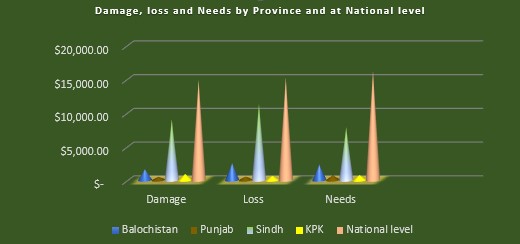
Drilling down into these issues a little further, the complexity of the present situation will require a careful balancing of potentially competing risks. In the short term, Pakistan’s government faces the challenge of reconciling central and regional budgetary demands. At a national and macro level, it is legitimately concerned to attract inward investment for its major infrastructure projects (i.e., the China-Pakistan Economic Corridor) while also acting to protect its position politically, in light of the upcoming General Election and the ever-present threat of global markets taking a negative view of Pakistan’s socioeconomic plight. Stability – and the perception of economic stability and fiscal responsibility – is of immense importance here and the key to monetary security. Under this heading, a clear agenda, an outline timetable for targets and reports, an explicit policy on responding to unexpected events and major catastrophes, together with legal and constitutional reforms that draw the energy sector into the heart of Pakistan’s economic planning, are priorities. The path to renewal is not through chaos and confusion but order and sound principles. A dynamic economy is not the result of chance and guesswork. Pakistan has immense potential as a vibrant economic partner in Asia and more generally. Stimulus packages will only go so far to restore confidence in post-deluge Pakistan. The reform of its internal economic systems and social welfare programmes is a necessary precursor to the transformation of internal and external perception of, and confidence in, the country and its leadership.[13] Dynamic, finely focused, public-private partnerships, of the kind many experts look for in Pakistan’s reconstruction, can act to mitigate socioeconomic tension and imbalance. Tough decisions will have to be made by the PDNA to address regional distinctives and local pressures. Competing demands from business, state administration and individual communities are inevitable. Sensitivity to short-, medium- and long-term priorities and impacts will be key. Poor handling of pressing issues at such a volatile time in Pakistan’s national life faces the risk of exacerbating the ills the country already faces. A clear plan and integrated vision to create a new, vibrant, economically prosperous ‘Safe Pakistan’ offers much to many in Pakistan, but their implementation will be far from easy.[14]
Conclusion
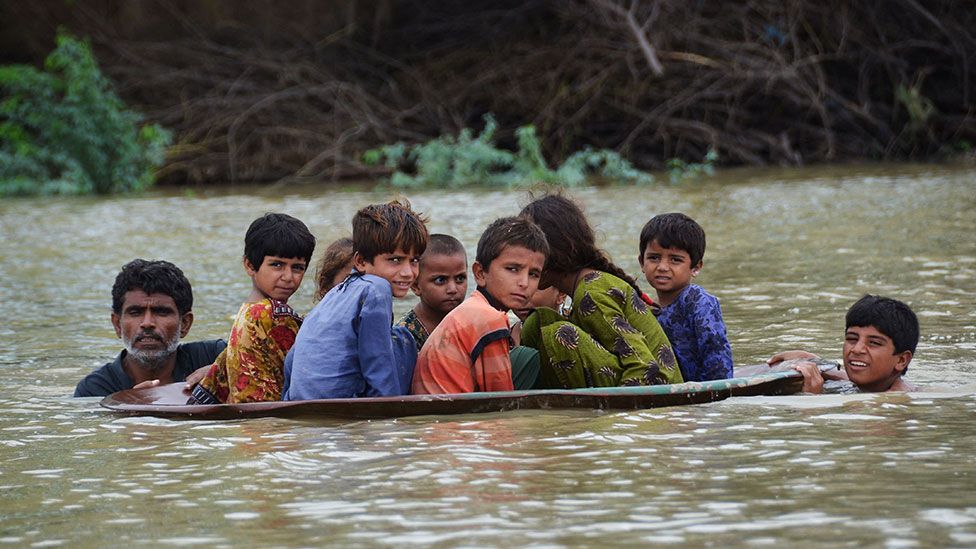
The dramatic deluge that struck Pakistan this year has wreaked havoc on the lives, systems, infrastructure, and subsistence needs of millions. 1 in 7 of the country’s citizens have been directly affected, many millions more indirectly affected by five months of rain and floods. Fragile lives have been lost or ruined, seemingly irreversibly. As we have seen, the knock-on effects have been on an unprecedented scale, with basic needs not met and long-term hopes dashed. Water borne diseases continue to impact human and animal health and food security. Prices continue to rise. Fresh water is still in short supply in some areas. Women and girls, who already face cultural restrictions, find themselves further marginalized and mistreated: even poorly paid jobs for menial tasks are hard to come by. The substructure of life in Pakistan has been eroded. The extent to which national and local governments in Pakistan can help to rebuild financial and physical stability in the aftermath of the floods and in the midst of an adverse financial and ecological climate worldwide, remains to be seen. The good will be shown by many outside Pakistan during and after the floods is a bright light on an otherwise dark path ahead.
Dr Iram Naseer Ahmad, Research Associate
[1] Cf. Shabir, O. (2013), ‘A summary case report on the health impacts and response to the Pakistan floods of 2010’, PLoS Currents, 5.
[2] In 2010, devastating floods killed more than 2000 people and directly affected 20m. (cf. Sarkar, S. [2022], ‘Pakistan floods pose serious health challenges’, BMJ,British Medical Journal Publishing Group).
[3] OCHA. (2022). Pakistan Monsoon Floods 2022 (September), p. 1-7.
[4] Khan, S., U. Bin Nisar, A. Hussain, N. Ahmad & B. Siddique (2022), ‘Hydrological investigation of subsurface Glacial Lake Outburst Floods at Bindo Gol Valley under changing climate’, Journal of Applied Geophysics 201: 104633.
[5] Ochani, S., S. I. Aaqil, A. Nazir, F.B. Athar, K. Ochani & K. Ullah, K. (2022), ‘Various health-related challenges amidst recent floods in Pakistan; strategies for future prevention and control’, Annals of Medicine and Surgery 82: 104667.
[6] Shah, A. A., C. Ajiang, Z. Gong, N. A. Khan, M. Ali, M. Ahmad, A. Shahid, et al. (2022), ‘Reconnoitering school children vulnerability and its determinants: Evidence from flood disaster-hit rural communities of Pakistan’, International Journal of Disaster Risk Reduction 70: 102735.
[7] Ahmad, D., & M. Afzal (2022), ‘Flood hazards and agricultural production risks management practices in flood-prone areas of Punjab, Pakistan’, Environmental Science and Pollution Research 29 (14): 20768-20783.
[8] Jacobsen, G. D. (2011), ‘The Al Gore effect: an inconvenient truth and voluntary carbon offsets’, Journal of Environmental Economics and Management 61(1): 67-78.
[9] Rasool, S., I. A. Rana, & S. Ahmad (2022), ‘Linking flood risk perceptions and psychological distancing to climate change: A case study of rural communities along Indus and Chenab rivers, Pakistan’, International Journal of Disaster Risk Reduction 70: 102787.
[10] Cf. Vld, L. Q., H. Carlsson, & R. Dobias (2010), Climate change in South Asia: Strong responses for building a sustainable future. Asian Development Bank.
[11] OCHA. (2022). Pakistan Monsoon Floods 2022 (September), p. 1-7.
[12] Ahmed, A. (2022), ‘Autonomous adaptation to flooding by farmers in Pakistan’, in Climate Change and Community Resilience (Springer, Singapore), p. 101-112.
[13] Overview, S., & H. Needs (2023), Pakistan Humanitarian Needs 5: 1-10.
[14] Pakistan, P. C. (2022), Floods in Pakistan.
